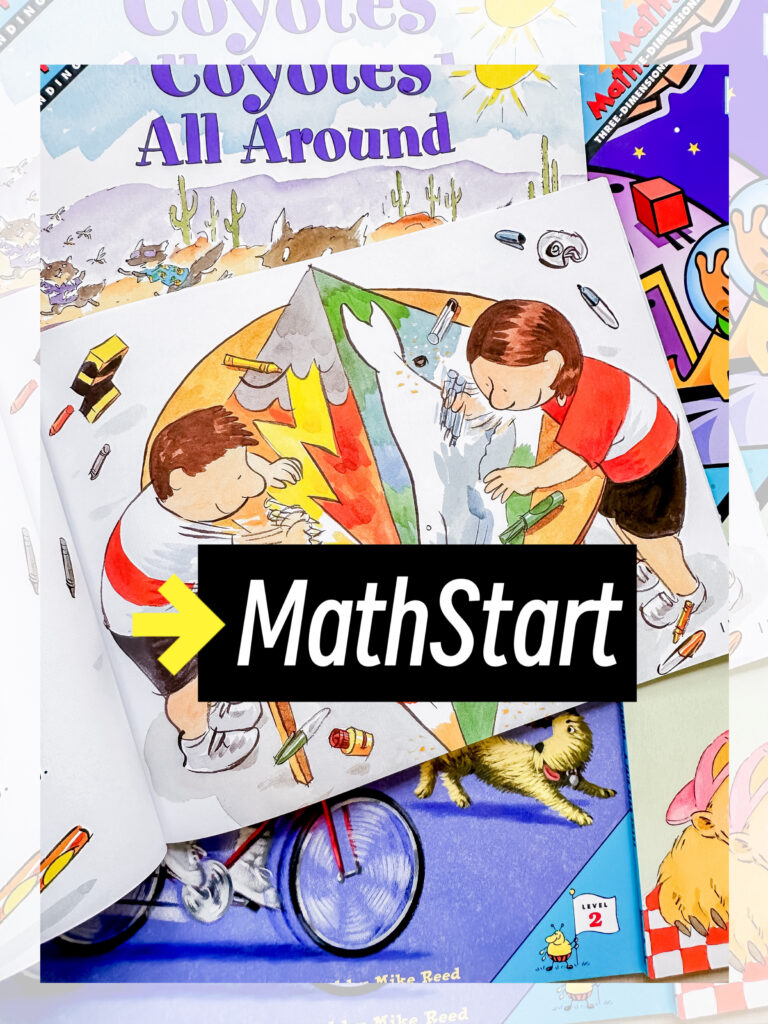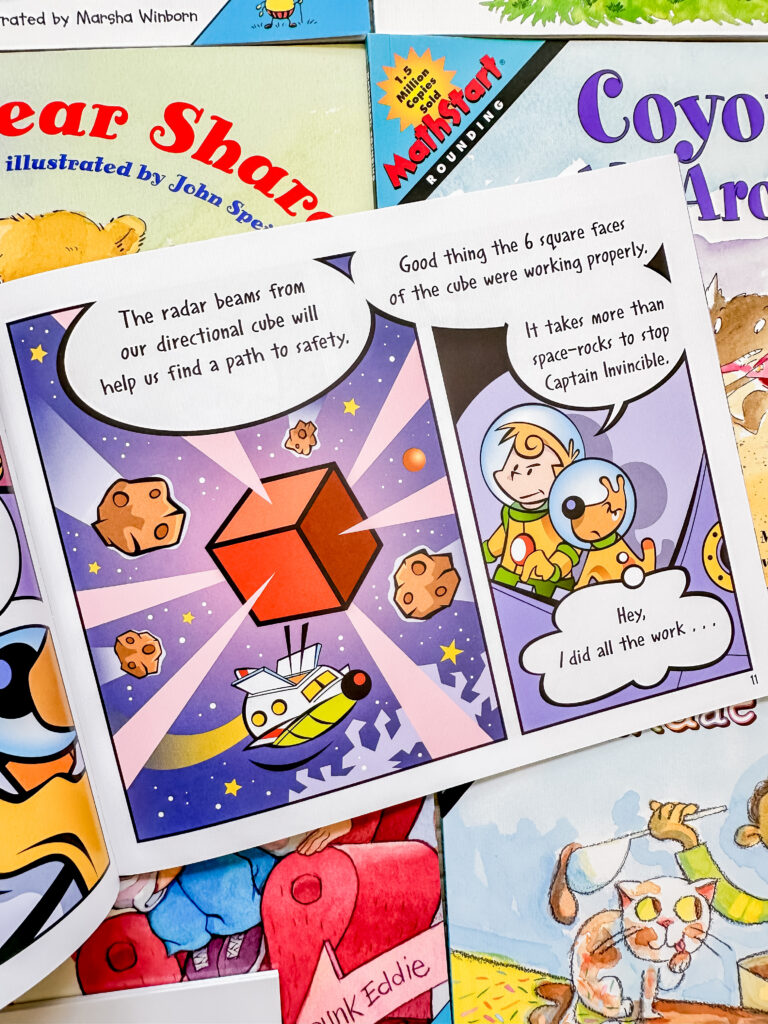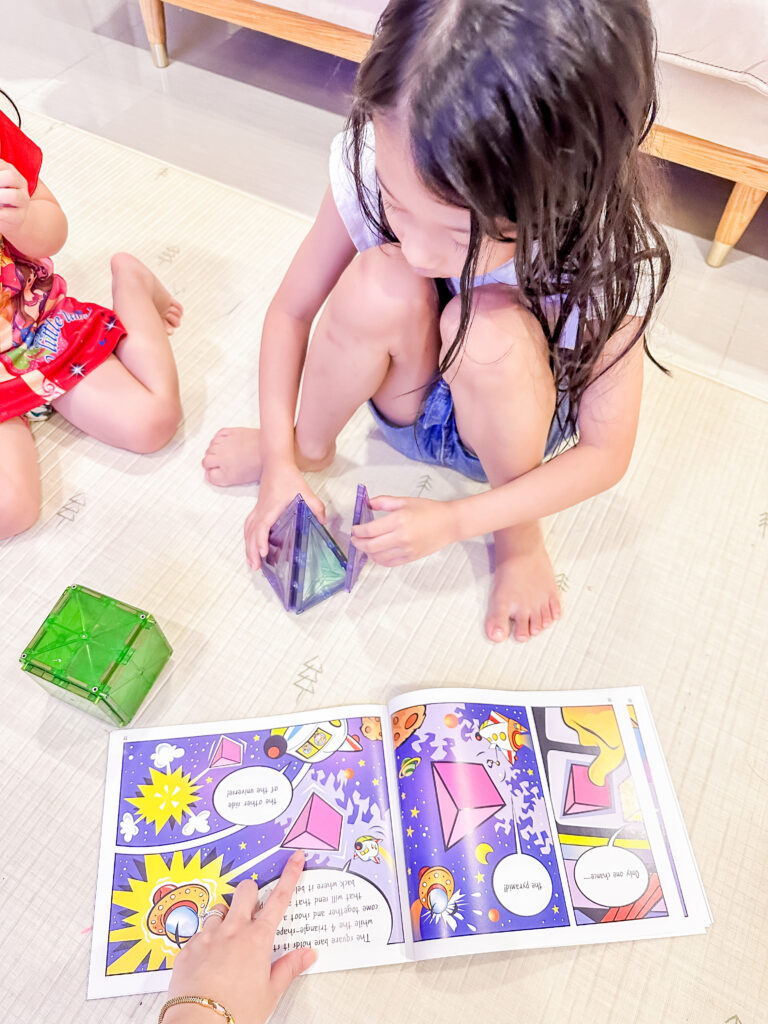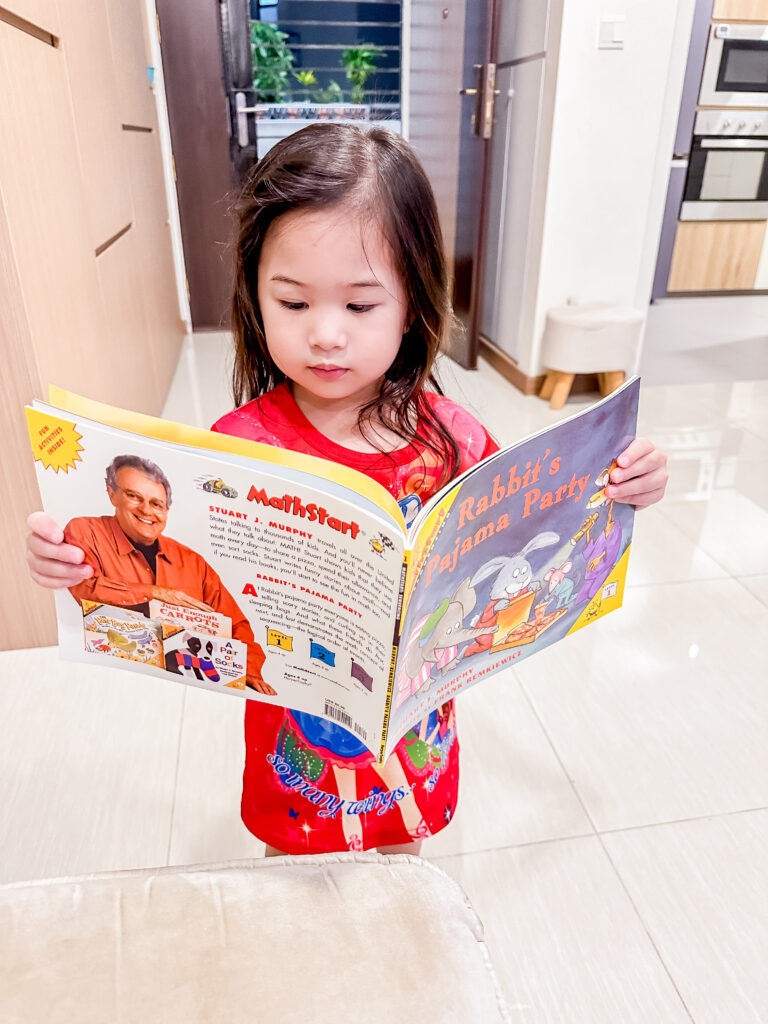Have you ever seen your kids with that determined look as they try to divide snacks or goodies evenly among themselves? They’re instinctively using math without even realizing it. MathStart taps into everyday moments like these to help kids relate to math in their own lives.

I love how big and colorful the books are and the illustrations truly capture my heart. They’re beautifully simple but filled with tiny details that lead to fun discussions with my kids.

The stories are simple and straightforward. Each story begins with a plot that captures my kids’ imagination.
For example, in A Pair of Socks, my kids have so much fun matching up the socks by finding the patterns that look the same. I love seeing how they dive into the stories, getting completely absorbed and learning math concepts along the way.

Level 1 includes three series, each slowly increasing in difficulty. We begin with shapes and counting, then gently move on to time and subtraction, and finally explore odd and even numbers.
One of my favorite Level 1 books is Rabbit’s Pajama Party. I love how a fun sleepover party story becomes a lesson in sequencing for our kids. The way the story unfolds makes it easy for them to understand how to organize events, ideas, and objects in a logical order.

And in Jack the Builder, I love how the story uses building blocks to teach addition. It turns a simple playtime activity into a fun math lesson, and my kids light up when they see how their blocks come together to solve math problems.

At Level 2, the stories are a bit more complex, but they’re still super engaging for my kids. From learning about days, weeks, and months, to rounding numbers, and even exploring measurements while building sandcastles.
My girls and I have so much fun with “Captain Invincible and the Space Shapes.” The comic style makes learning about 3D shapes so much more fun.

Storytelling is such a powerful way to teach. I love how MathStart uses storytelling to introduce basic math concepts to our kids. It allows them to dive in from their own perspective, making them more open and excited to learn. Plus, they break down complex ideas into simple, relatable moments that makes the lessons stick.

Comments (0)